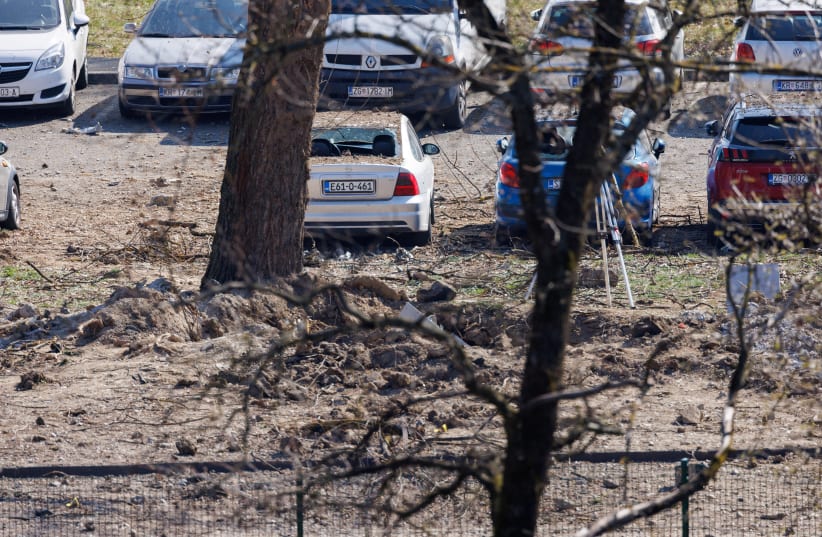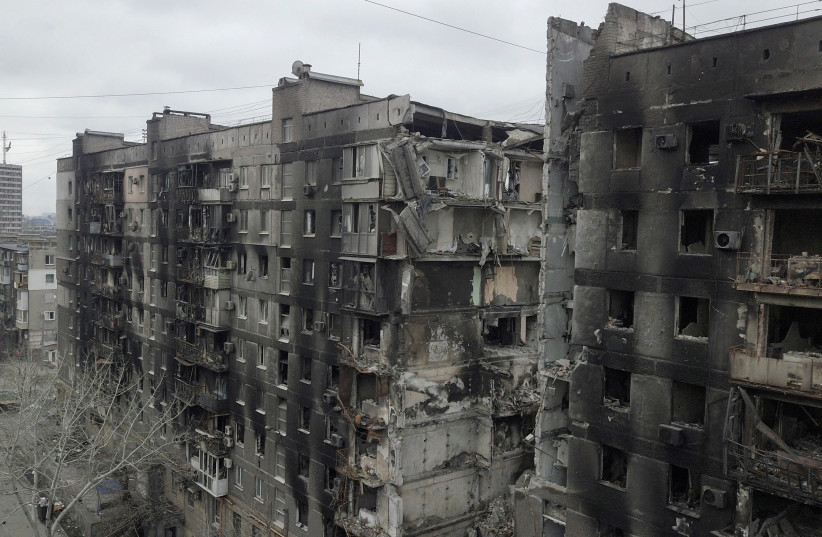Ukraine is fast becoming a test bed for new types of drones so that other countries can see how effective they may be in future wars.
When Ukraine was invaded by Russia in February, it had a number of drones at its disposal to use against the Russian military and has used them well. But as the war has dragged on, many countries that supply weapons to Ukraine now see the potential of various types of drones to transform the battlefield in Ukraine.
Reports over the last week that the US was sending dozens of Phoenix Ghost drones to Ukraine as part of a new arms deal illustrate one such example of this. “The White House said earlier on Thursday that over 121 Phoenix Ghost Tactical Unmanned Aerial Systems would be provided to Ukraine as part of the new arms package,” Reuters reported. The drone was “developed for a set of requirements that very closely match what the Ukrainians need right now in Donbas,” Pentagon spokesman John Kirby said.
Ukraine was acquiring many types of drones and UAVs, the Drone Data Book reported several years ago.
“Several reports have indicated that the number of unmanned aircraft in the Ukrainian military is rising sharply,” the report said. “In its official annual review of military procurement, the Ukrainian Air Force reported purchasing 75 systems (each of which likely includes multiple aircraft) in 2018, roughly double the 35 systems the Air Force purchased in 2017.
“In January 2018, Ukrainian journalist Yuri Butusov, editor of the online website Censor.net, reported that the Armed Forces General Staff had set a goal of purchasing a minimum of 500 unmanned aircraft systems over the next few years, although this figure has not been officially confirmed.”
Ukraine acquired and deployed a number of smaller drones, but it also procured the larger Turkish Bayraktar drones, which are armed with missiles. As the war dragged on into its first month, these drones were widely praised in Ukraine.
It isn’t clear how many of the two dozen Bayraktars that Ukraine has are still flying, but the sense that they can still inflict damage on Russia is an important boost for morale.
What matters now is not what was in Ukraine’s inventory in late February when the invasion began, but rather how Ukraine is acquiring new drones as the war continues.
LET’S PAUSE for a second and examine what is meant by the word “drones” when we discuss modern warfare.
The word drone is an umbrella term for a variety of what are called unmanned aerial systems. This can mean small commercially available DJI drones, made in China, all the way to much larger UAVs, such as the American Reaper.
Most US systems are not for sale, and if they are, they take years for countries to procure. Some of these systems are also very expensive, such as the Global Hawk, a drone the size of an airplane that is used for surveillance. It has a range of some 22,000 km. and can fly as high as 60,000 feet for a day and a half before landing.
Ukraine doesn’t need a large surveillance drone like that; it needs smaller drones. These may include what is called a loitering munition, or kamikaze drone. Smaller drones that are expendable and which include a warhead within their body can be used for surveillance and then can slam into a target.
For instance, these kinds of drones can be issued to ground forces, such as battalions, which can operate them easily in the field. Usually, soldiers can be trained to use these drones in a few days. They are operated easily with a tablet or similar device that is user friendly.
The idea is that you can deploy them from a backpack in the field or from a vehicle, and they fly up, traveling several kilometers, enabling the unit to see enemy forces. When the operator identifies something they want to destroy, the drone flies into the target.
Ukraine’s army, which is now facing a large Russian attack in the east, needs weapons like this. Russia does not appear to have a large number of drones or superior technology to Ukraine. That means Russia can’t easily jam these drones or shoot them down.
Shooting down drones can be complex because they can be maneuvered easily and are small. This gives Ukraine an advantage when deploying new types of technology. However, this also means Western countries have to be flexible in providing Ukraine with new technology, while still ensuring they do not provide technology so sensitive that they don’t want the risk of it falling into the wrong hands.
This is because in the past, countries such as Iran have downed sophisticated US drones, including the Sentinel, and have tried to reverse-engineer them. The US and Western powers likely don’t want sophisticated drones to be captured by Russia and the information from them shared with Iran or China.
This means drones being sent to Ukraine may enable the US and other countries to test new technologies without compromising larger, more sensitive drones. The deployment of the Switchblade and now the Phoenix Ghost are examples of how the US is enabling Ukraine to resist and also likely learning how these drones can be effective on the battlefield.
WESTERN MILITARIES like the US have often suffered from a problem when it comes to using new drones. The Predator and other drones the US developed in the 1990s and early 2000s have been used during the Global War on Terrorism. That means they were used against simple and unsophisticated enemies in airspace that was not contested and didn’t face competition from enemy air defenses. Taliban or al-Qaeda terrorists do not have the means to defend themselves against drones.
But that kind of air superiority and dominance meant the US had the luxury and privilege to move slowly in drone development. The slow development of systems like the surveillance stealth-like Sentinel drone or others like it is an example. Too much technology packed into an expensive system is what characterizes many medium and large American drones.
What militaries want today is not a handful of drones worth hundreds of millions of dollars. They want a large number of small drones. Countries like Israel are examples of those that created a wide range of drones, including smaller tactical drones and larger systems. Iran has also pioneered drone development, as have China and Turkey.
Azerbaijan has acquired a large number of drones, deploying them as a kind of “instant air force” in the recent war with Armenia. Azerbaijan illustrated that using loitering munitions could easily destroy a conventional military. Ukraine, however, is not in the same position as Azerbaijan.
Russia is much more powerful than Ukraine. It has a GDP similar to Spain or Italy, whereas Ukraine’s is similar to or smaller than Romania. Russia’s armed forces are, on paper, 10 times the size of Ukraine, with a military budget similarly larger than Kyiv’s. That means when it comes to technology, Ukraine must be nimble and acquire the best types of weapons that can be a force multiplier.
It can’t do what Azerbaijan did. It has to act quickly, and it is already being invaded and forced to fight on its own land. The likely Russian push from the east will be over flat terrain, unlike the forests around Kyiv that aided Ukraine’s defenders. The new battlefield, similar to the fields of the battle of Kursk in World War II, is a perfect place for drones.
Ulrike Franke, an expert on drones and senior fellow at the European Council on Foreign Relations, pointed out on Twitter some of the important issues relating to drone acquisitions in Ukraine. The main difference between Switchblade and the Phoenix Ghost drone was likely in the loitering time, she said. “The [Ghost] drone can take off vertically, fly for six-plus hours searching for or tracking a target, and operate at night using its infrared sensors,” an article she posted from Politico said.
Franke also cited an article at RND, which disclosed that wealthy Ukrainians helped Ukraine acquire drones from a German company in Bavaria by purchasing the drones with funds out of their own pockets and donating them with help from the Ukrainian consul in Munich. These drones take off vertically and can fly about 15 km.
According to an article on a Ukrainian military website, the German-made Vector drone was developed by Quantum Systems. Butusov, the journalist referenced in the Drone Data Book, also noted the presence of this UAV. It is apparently deployed with the Dnipro Territorial Defense and “is accurately [aiding in the] striking of Russian troops with artillery fire.”
THE EXAMPLE of this drone acquisition shows how private individuals can help Ukraine acquire UAVs and help in the rapid deployment of them, rather than waiting for slower procurement via militaries in the West.
The issue here is clear because even though Western countries are promising Ukraine hundreds of millions in military aid and various systems, including artillery and helmets, some of the promises have not come through. This is particularly true in stories involving “swaps” of aircraft or tanks, where Eastern European countries have stocks of old Soviet-era equipment that Ukrainians know how to use, such as MiG jets, or old tanks that could be sent to Ukraine.
But countries want something in return, such as more modern aircraft. Ukrainians can be trained on Western vehicles and planes, but that requires bringing them to places such as Germany to train, because the crews can’t train Ukraine with Western forces. This means it’s easier to send older equipment the Ukrainians are already familiar with or systems that are easier to use, such as anti-tank weapons, mortars or artillery.
Drones these days are often user-friendly and don’t require “pilots” to fly them from a ground control station; rather, they are operated more like one learns a new video game on a tablet-style device. The interface means soldiers can learn these systems quickly and put them in the field.
Western countries are beginning to see how they might be able to help both Ukraine and themselves by understanding how these systems work on a real battlefield against a difficult near-peer adversary.
The US has said it wants to learn to confront these near-peer adversaries after fighting terrorists for years, and in Ukraine, the US and others have a chance.
Many of them also know that the larger potential adversary, China, has much more sophisticated equipment than Russia. Therefore, what they learn now in the Donbas or southern front around Mykolaiv has real-world implications far beyond Ukraine.

